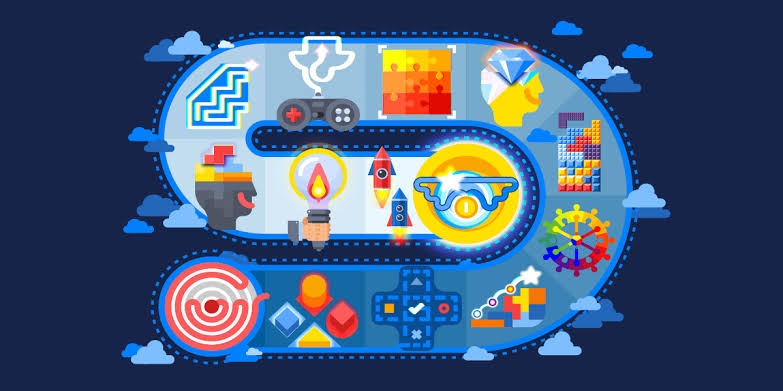Who would have thought that turning education into a game could actually make it enjoyable? Well, gamification has done just that and more.
By introducing game elements into educational settings, students are more engaged and motivated to learn. It’s like magic, except it’s science!
Don’t Miss Out: Join our Facebook Group for funny and motivational quotes @ livegamefully
The benefits are astounding: improved learning outcomes, enhanced retention, and personalized learning experiences. Suddenly, education doesn’t seem like such a drag anymore.
The Benefits of Gamification in the Workplace
Now let’s talk about the workplace, where productivity and motivation can often hit rock bottom. Fear not, for gamification comes to the rescue once again!
By introducing game-like elements, employees become more engaged, motivated, and productive. It’s like turning their mundane tasks into a thrilling quest for success.
Gamification also fosters learning and development, while boosting employee satisfaction and retention. Who would have thought that work could actually be fun? Well, with gamification, it can be!
How it Works
To successfully gamify education and the workplace, there are some key strategies to keep in mind. First, set clear goals and objectives, because let’s face it, nobody likes to play a game without knowing what they’re aiming for.
READ AlSO: Top 7 Organisation that uses gamification to learn from
Next, create meaningful and relevant challenges that keep people on their toes and excited about overcoming obstacles.
Don’t forget to provide feedback and recognition because nothing says “good job” like a virtual pat on the back.
Incorporating social and collaborative elements also enhances the experience, because teamwork makes the dream work, right? Oh, and let’s not forget about rewards and incentives.
After all, who doesn’t love a little extra motivation to strive for greatness? Lastly, leverage technology and analytics to track progress and make adjustments. It’s like having a cheat code for success!
Examples of Successful Gamification
Let’s take a look at some real-world examples of gamification in action. For instance, Tuteria, an online tutoring platform, incorporates game mechanics into its system, allowing students to earn points, badges, and rewards as they progress in their studies.
This gamified approach incentivizes students to actively participate and achieve better learning outcomes.
Another example is the “Passnownow” platform, which uses gamified quizzes and interactive learning materials to improve educational outcomes for underprivileged students.
By making education enjoyable and rewarding, this initiative aims to bridge the educational gap and empower disadvantaged youths with knowledge and skills.
Even Google’s Code-in programming competition has made coding cool and competitive. These success stories demonstrate the power of gamification to elevate education and the workplace to new heights.
Challenges and Limitations of Gamification
Of course, gamification isn’t without its challenges and limitations. Over-reliance on extrinsic motivation can lead to a dependence on rewards rather than genuine interest.
We don’t want people doing their work just for the gold stars, do we? There’s also the potential for gamification to negatively impact intrinsic motivation, as the thrill of the game might overshadow the joy of the task itself.
Measuring and evaluating the effectiveness of gamification can be tricky too. It’s not as easy as counting the number of high fives given out.
Read Also: How to Use Gaming and Gamification to Reform the Nigerian Police Force
Lastly, ethical considerations and concerns must be addressed to ensure that gamification is used responsibly and doesn’t exploit individuals.
Conclusion
In conclusion, gamification has proven to be a game-changer in education and the workplace.
Collaborative and social elements, clear goals, meaningful challenges, feedback, rewards, and technology integration all play vital roles in successful gamification.
Striking the right balance between extrinsic and intrinsic motivation is crucial for sustainable engagement.
Measuring the effectiveness of gamification can also be complex, as it requires comprehensive evaluation methods beyond simple metrics.
Moreover, ethical considerations must be addressed to ensure that gamification practices are fair, inclusive, and transparent.
Who would have thought that turning learning and work into engaging and enjoyable experiences could yield such remarkable results?
Gamification has shattered the notion that education and productivity must be tedious and uninspiring endeavors.
READ MORE: How To Adapt Gaming Technology To Education, Learning Through Play For Children, Case Studies
So, let’s embrace the power of gamification and unleash its potential in education and the workplace.
Let’s transform the learning environment into a captivating adventure, where students are motivated, inspired, and eager to acquire knowledge.
The time has come to embark on this transformative journey. Embrace gamification, experiment with different strategies, and tailor them to your specific context.
Be creative, innovative, and daring. Remember, education and work don’t have to be dreary affairs. They can be invigorating, stimulating, and enjoyable.
So, let’s level up our approach, gamify our way to success, and unlock higher levels of productivity.
Are you ready to embark on this exciting adventure? The power of gamification awaits.

